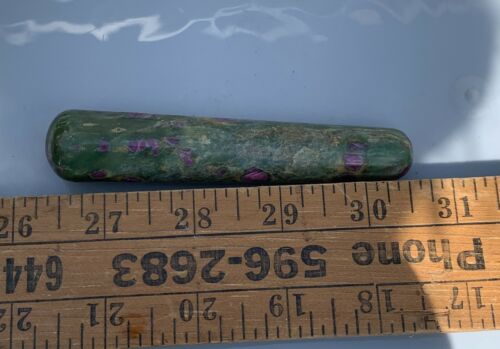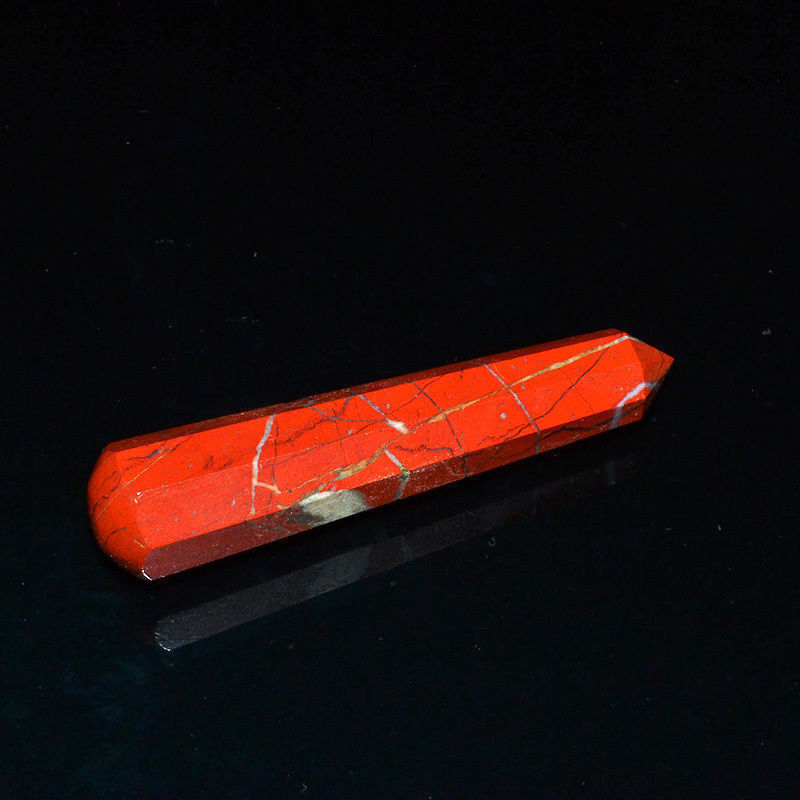-40%
Green Jade Nephrite Generator - Medieval Labyrinth activated
$ 25.87
- Description
- Size Guide
Description
KEY PROPERTIES: Health, AbundanceELEMENT: Earth
CHAKRAS: Heart (4th)
LABYRINTH ACTIVATED THROUGH: Medieval Labyrinth
SUGGESTED CRYSTAL INFORMATIONAL BOOK
: The Book of Stones by Robert Simmons
Green Jade is a beautiful stone to heal the heart. It is beneficial for dream life and fosters steady growth of one's chi, life force energies. It is recommended to carry or wear outdoors to connect and draw upon the Earth's life-force energies. It aids in connecting with the energy of true abundance and in manifesting that frequency into material form while at the same time helps prevent one from becoming influenced by greed symptoms. Helps heal scarcity mindedness, fear of money, fear of poverty, greed, covetousness and other symptoms of belief in money as a measure of worth.
Green Jade Nephite is a powerful physical heart healer and helps sooth the nervous system.
Learn more about Green Jade Nephrite:
http://www.metaguides.net/greenjade.jpg
All stones, crystals, gems, bracelets, necklaces, and pendants have been walked through a Medieval Labyrinth located at a local United Methodist church and prayed over for God's will to protect and lead those awakening to truth of Christ Consciousness. Some have also been walked through the Land's End Labyrinth in San Francisco, CA and will be noted in the above description if applicable.
Genesis 28:10-17, Exodus 28:16-19, Luke 19:40, Revelations 21:19
The Medieval Labyrinth information:
First developed in Christian manuscripts in Europe during the ninth and tenth centuries CE, the medieval labyrinth has obvious four-fold symmetry (also often seen in the Roman labyrinths) to produce a design far better suited for use in a Christian context. While commonly created with 11 concentric circuits surrounding the central goal, a number of early examples can be found with anywhere between 5 and 15 circuits and with slightly different path connections and arrangements.
6-circuitmedieval labyrinth design, in a manuscript created at Abingdon, England, c.1030-1048 (photo: Cambridge University Library)
By the eleventh and twelfth centuries this form became common in manuscripts and in the decoration of church walls and floors in Italy. By the early thirteenth century it had spread to France, and soon became the principle form throughout southern and western Europe. The famous use of this labyrinth at Chartres Cathedral has led many writers to term this design the "Chartres" labyrinth. For exact replicas of the labyrinth at Chartres, this term is acceptable, although inappropriate otherwise, as this design was in widespread circulation long before it was employed at Chartres. Likewise, “cathedral” and “eleven path/circuit” are names that do not accurately reflect the variety of designs and locations in which this design is encountered. Although others have used the term "Medieval Christian," "Medieval" accurately portrays the context of this labyrinth, and does not exclude those examples that appear in secular or non-Christian contexts.
Medieval Variants
As with the classical labyrinth, a considerable number of variations upon the basic theme of the medieval labyrinth have been recorded. Circular, square, and polygonal forms of the basic medieval form are common and need no separate classification. However, some examples display deliberate attempts to produce a different design - with more or fewer circuits, different methods of
connecting the pathways, or alterations to fit the space available or purpose intended. Some, such as the labyrinth formerly in Reims Cathedral, France, were especially influential. With the invention of printing in late 15th century, specific labyrinth designs appearing in early architecture and gardening books were widely copied and adapted further. Other variations are clearly the result of incorrect attempts at construction or inaccurate restorations of previous designs; this is especially the case with labyrinths formed from turf or boulders, which are prone to deterioration and disturbance.
The current revival of interest in the medieval labyrinth design, especially in America since the mid-1990s, has resulted in the development of a number of new variations. Some are based directly on the labyrinth in Chartres Cathedral, often with fewer circuits to enable them to fit in confined spaces, or to produce wider paths. A number have been given specific names by their creators, but as most of these titles exist primarily to establish copyright, they can conveniently be included in this sub-category of the medieval type.
One particular medieval group probably deserves separate recognition - the St. Omer labyrinth. Although its pathway may seem to be a random meandering design, it can be demonstrated that the pattern was developed directly from the standard medieval form. The original example constructed in the fourteenth century at the Abbey of St. Bertin in St. Omer, northern France, was subsequently copied and further developed and has been employed on various occasions until recent times.
Medieval Labyrinth Source:
http://www.labyrinthos.net/Labyrinth%20Typology.pdf












